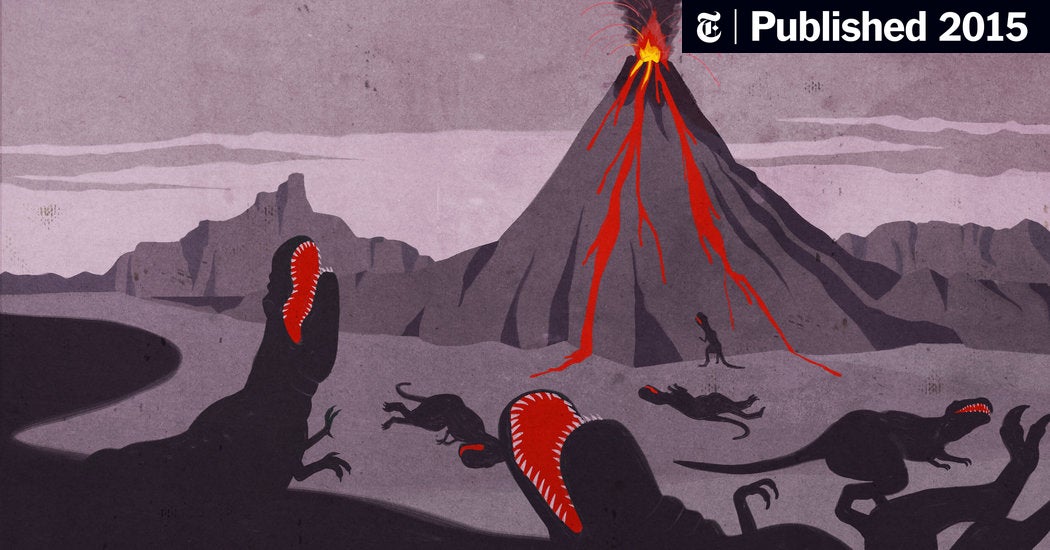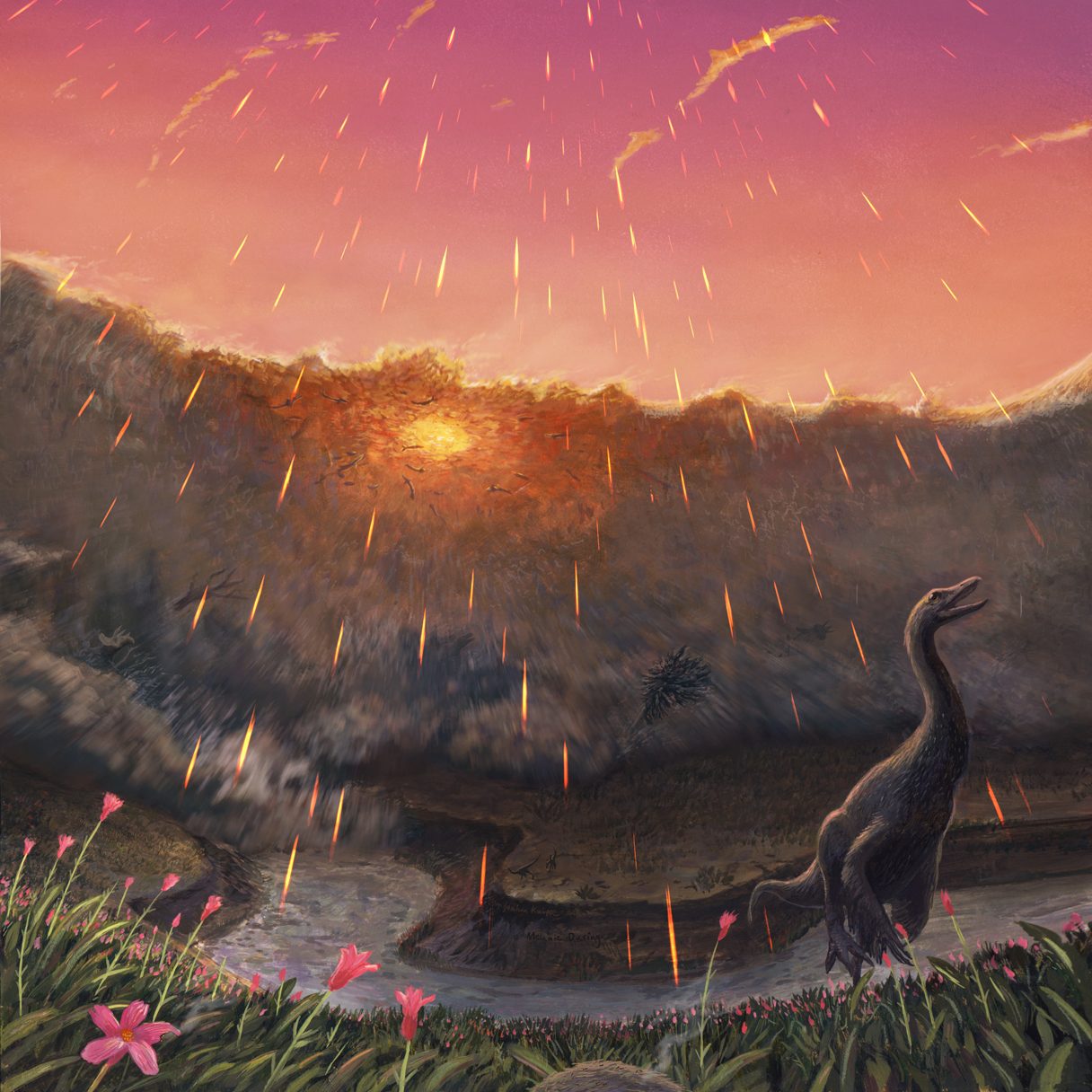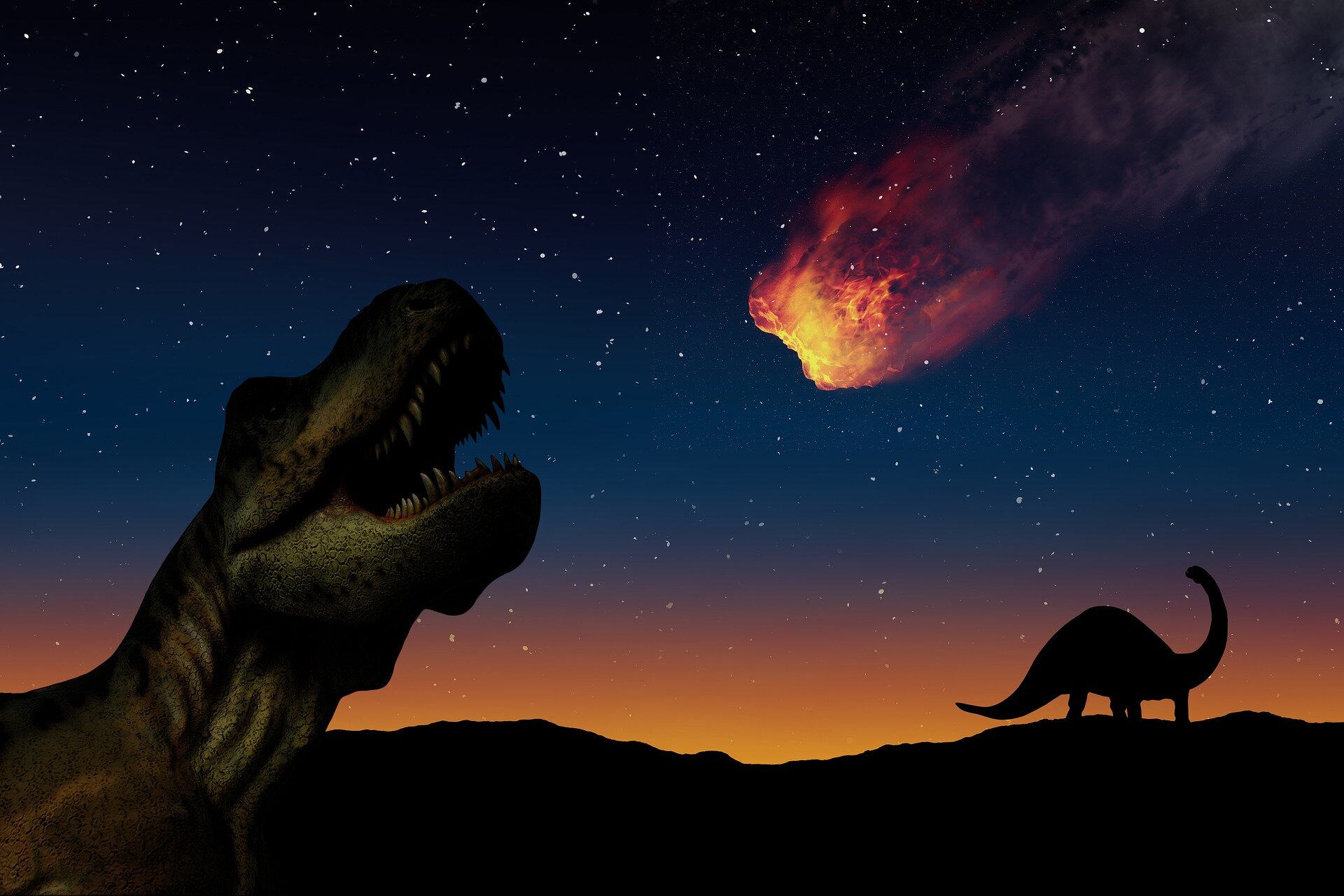Dinosaurs once roamed the Earth, dominating the land for over 160 million years. But, around 66 million years ago, they mysteriously vanished from the planet. What happened? This post delves into the fascinating theories surrounding their extinction, exploring various scientific explanations that have intrigued both experts and curious minds alike. From astronomical events to climate shifts, we'll uncover the potential reasons behind this cataclysmic event.
Theories on Dinosaur Extinction

The extinction of dinosaurs is a complex puzzle, and scientists have proposed several theories to explain what happened. Here’s a breakdown of the most prominent hypotheses:
- Asteroid Impact Theory
- Fires and heat blasts that swept across the land.
- A “nuclear winter” effect from dust blocking sunlight.
- Collapse of food chains due to darkness and temperature drops.
- Volcanic Activity Theory
- Long-term climate change.
- Increased acid rain affecting habitats.
- Disruption of ecosystems due to toxic gases.
- Climate Change Theory
- Glacial periods reducing habitats.
- Changing flora that reduced food availability.
- Multiple Causes Theory
- The asteroid impact leading to volcanic activity.
- Extended climatic changes exacerbated by both phenomena.
- Immediate Shockwaves: The initial impact would have generated shockwaves that could be felt worldwide.
- Wildfires: Global wildfires ignited by the intense heat would have wiped out vast areas of vegetation.
- Dust and Debris: Dust clouds would have obstructed sunlight, leading to a dramatic drop in temperatures.
- Acid Rain: The vaporization of rock and sulfur released would have created acid rain, further disrupting ecosystems.
- Climate Change: The ash and gases spewed into the atmosphere could have led to a significant cooling effect by blocking sunlight, mimicking a “volcanic winter.”
- Acid Rain: Volcanic eruptions release sulfur dioxide, which can mix with water vapor to produce acid rain, damaging ecosystems.
- Habitat Destruction: Lava flows and ash fall could have directly destroyed habitats where dinosaurs lived, making it difficult for them to survive.
- Food Chain Disruption: With vegetation dying off from lack of sunlight and polluted rain, herbivorous dinosaurs faced starvation, leading to widespread food shortages.
- Temperature Fluctuations: The Earth was much warmer during the age of dinosaurs. However, shifts in temperature—both cooling and warming—led to dramatic impacts on their habitats. Some species struggled to adapt to rapidly cooling climates.
- Loss of Vegetation: As temperatures changed, plant life also evolved. Many dinosaurs depended on specific types of vegetation, and as these plants died out, so did their food sources.
- Volcanic Activity: The Late Cretaceous period saw increased volcanic activity, releasing ash and gases into the atmosphere. This not only blocked sunlight but also contributed to acid rain, further disrupting ecosystems.
- Sea-Level Changes: Fluctuating sea levels would have altered coastlines and flooded low-lying areas vital for breeding and feeding, disrupting ecological niches.
- Resource Competition: As herbivorous dinosaurs evolved and diversified, they competed for foliage. This competition could lead to resource depletion, affecting entire populations.
- Predatory Pressures: With predators at the top of the food chain, the survival of herbivorous dinosaurs was in constant jeopardy. Larger predators could exert intense pressure on prey species, leading to evolutionary adaptations over time.
- Selective Extinction: Some species may have been outcompeted and thus faced extinction. For instance, smaller herbivores could have been more vulnerable to both predation and competition than their larger counterparts.
- Impact of New Species: The introduction of new species into ecosystems, whether through migration or evolutionary changes, could shift the balance of power. New predators or competitors could dramatically alter existing dynamics.
- Documentaries: These in-depth films often combine expert interviews, fossil illustrations, and reconstructions that can give you a well-rounded view of different extinction theories.
- Educational Content: Channels dedicated to educational material frequently release engaging videos that break down complex theories into digestible pieces.
- Animated Explainers: You’ll find fun animations that depict extinction scenarios, showcasing events like asteroid impacts or volcanic eruptions that could have led to the dinosaurs’ demise.
- Paleontological Lectures: Tapping into the minds of leading paleontologists can be incredibly enlightening. Many experts share their findings and theories, providing insights into the ongoing research around dinosaur extinction.
- Massive wildfires
- Global cooling due to dust and debris blocking sunlight
- Acid rain caused by the vaporization of sulfur-rich rocks
- Greenhouse gases leading to climate changes
- Sulfur aerosols causing global cooling
- Toxic gases that could devastate ecosystems
- Changing sea levels
- Predation and competition among species
- Changes in vegetation and vegetation types
One of the most widely accepted theories is that a massive asteroid struck Earth, causing catastrophic consequences. This event is believed to have created the Chicxulub crater in Mexico. The impact would have released immense amounts of energy, leading to:
Another significant theory is that volcanic eruptions, particularly the Deccan Traps in modern-day India, released vast amounts of lava, ash, and gases into the atmosphere.
This could have resulted in:
Long before the asteroid impact, dinosaurs may have been struggling with gradual climate shifts. Cooling temperatures, changing vegetation, and fluctuating sea levels could have contributed to their decline.
Notable factors include:
Some scientists propose that the extinction of dinosaurs was not the result of a single event, but rather a combination of factors, such as:
As researchers continue to study fossils and geological evidence, the mystery of the dinosaurs' demise remains one of science’s most intriguing debates, revealing that the past is as dynamic and unpredictable as our present.
Also Read This: How to Make a Skype ID: Easy Account Creation Tutorial on Dailymotion
Impact Hypothesis

Ah, the Impact Hypothesis! This theory is one of the most popular explanations for the mass extinction event that wiped out the dinosaurs about 66 million years ago. The core idea is that a colossal asteroid or comet collided with Earth, creating catastrophic consequences that dramatically changed our planet’s environment.
So, what’s the evidence behind this theory? Well, scientists discovered a layer of iridium-rich clay, known as the Cretaceous-Paleogene (K-Pg) boundary, found in various places around the globe. Iridium is rarely found on Earth’s surface but is abundant in asteroids. This discovery led researchers to postulate that an impact was indeed responsible for the drastic changes at that time.
The most famous site associated with this impact is the Chicxulub crater in Mexico, which is an astounding 150 kilometers wide! This immense crater is believed to have been formed by an impact of an asteroid approximately 10 kilometers in diameter. When it struck, it released an energy equivalent to billions of atomic bombs, resulting in fires, tsunamis, and a “nuclear winter” effect.
Now, let’s break down some effects of this catastrophic event:
In summary, the Impact Hypothesis serves as a stunning reminder of how forces beyond our control can shape life on Earth. It's one reason why the mystery of how dinosaurs died continues to fascinate so many of us!
Also Read This: Watch Video Tutorials to Make Stunning Tissue Paper Flowers on Dailymotion
Volcanic Activity and Its Effects

Now, let’s turn our attention to another compelling theory about the demise of the dinosaurs: volcanic activity. While the Impact Hypothesis is incredibly well-known, the role of massive volcanic eruptions cannot be underestimated. Picture this: enormous volcanic eruptions taking place in what is now India, known as the Deccan Traps, around the same time dinosaurs became extinct.
So, what did these volcanic eruptions entail? We’re talking about extensive lava flows, billowing ash clouds, and the release of toxic gases. Here’s how it could have impacted the dinosaurs:
In summary, volcanic activity during the late Cretaceous period presents another layer of complexity in understanding how dinosaurs met their end. Rather than being a simple and rapid event, their extinction was likely the result of a confluence of catastrophic events, making this chapter of Earth’s history all the more intriguing!
Also Read This: How to Use Electric Rollers: A Complete Guide for Perfect Curls
5. Changing Climate and Ecosystems
When we think about the great dinosaurs, we often envision a world full of lush greenery and diverse life forms. However, the environment they thrived in was far from stable. Over millions of years, Earth's climate and ecosystems underwent significant changes, contributing to the eventual downfall of these magnificent creatures.
To understand this, let's take a closer look at how climate change affected the dinosaurs:
In summary, the dinosaurs faced a range of climatic challenges that made survival increasingly difficult. While some species managed to adapt, the cumulative effect of these changes ultimately played a significant role in their extinction.
Also Read This: Learn How to Make Your Hair Grow Long Fast with Dailymotion Guidance
6. The Role of Competition and Predation
The dinosaur era was a time of fierce competition. Just like today, species were vying for resources like food and territory, and this battle for survival had significant effects on their populations. Understanding why some dinosaurs thrived while others perished involves delving into the dynamics of competition and predation.
Here are some factors highlighting the impact of competition and predation:
In conclusion, the interplay of competition and predation undeniably shaped the narrative of dinosaur survival. Those that could adapt were more likely to thrive, while others faced extinction—a phenomenon that underscores the nature of ecosystems and evolutionary processes.
Also Read This: What Is the Purpose of Dailymotion? Exploring Its Role in Video Sharing
7. Fossil Evidence Supporting Various Theories
Fossils are like nature's time capsules, giving us a sneak peek into life on Earth millions of years ago. When it comes to understanding how dinosaurs met their demise, fossil evidence plays a crucial role. Different types of fossils can support various theories about their extinction.
*1. Sedimentary Layers: The layers of sediment where dinosaur fossils are found can tell us a lot about the Earth's climate and environment at the time. For instance, a sudden change in sediment composition—like a layer rich in iridium—hints at a massive asteroid impact, supporting the theory that a cosmic event could have led to their extinction.
2. Fossilized Remains of Dinosaurs: By studying the fossilized remains of dinosaurs, scientists can identify patterns in their health and diet. Evidence shows that some dinosaurs were suffering from stress prior to extinction as indicated by bone diseases—suggesting a decline in resources such as food and water.
3. Plant Fossils: Dinosaurs depended heavily on vegetation for survival. Fossils of plants can indicate how the flora changed after catastrophic events. A sudden drop in plant diversity or the emergence of grasslands could suggest significant environmental shifts that impacted dinosaur populations.
4. Extinction Scenarios in Fossil Records:* Certain fossil sites show a sharp drop in species diversity, correlating with geological events like volcanic eruptions. Such findings align with theories linking massive volcanic activity to climatic changes that could have decimated dinosaur habitats.
In short, fossils are rich with information that helps piecing together the puzzle of how these magnificent creatures vanished from our planet. By examining the evidence from different sources, scientists are getting closer to understanding the complexities behind the extinction of dinosaurs.
Also Read This: Is Dailymotion Website Safe? An In-Depth Look at the Site’s Trustworthiness
8. Dailymotion Videos for Further Exploration
If you’re keen on diving deeper into the intriguing world of dinosaurs and how they met their end, Dailymotion is a fantastic resource. It hosts an array of videos that can enhance your understanding through visual storytelling. Here are some video categories you can explore:
In conclusion, Dailymotion can be your gateway to a treasure trove of information. Don't hesitate to click through and explore videos that demystify how dinosaurs died. Each click takes you a step closer to unraveling this ancient mystery!
How Dinosaurs Died - Scientific Explanations on Dailymotion
The extinction of dinosaurs remains one of the most intriguing subjects in paleontology and popular culture. Numerous scientific theories have been proposed to explain how these magnificent creatures vanished from the Earth about 66 million years ago at the end of the Cretaceous period. This blog post will explore the major theories, providing insight from a range of scientific studies and incorporating visual content available on Dailymotion that illustrates these compelling narratives.
1. The Asteroid Impact Theory
The most widely accepted explanation for the mass extinction event is the asteroid impact theory. According to research, a 10-kilometer-wide asteroid struck the Yucatán Peninsula in Mexico. This catastrophic event created the Chicxulub crater and resulted in:
2. Volcanic Activity
Another significant theory points to extensive volcanic activity, particularly the Deccan Traps in present-day India. The eruption of volcanic material would have released:
3. Other Factors
Other possible contributors to the extinction event include:
By examining these theories through scientific research and video content on Dailymotion, we can gain a comprehensive understanding of one of the greatest extinction events in Earth's history.
Conclusion: The extinction of the dinosaurs was likely caused by a combination of catastrophic events, including asteroid impacts and massive volcanic eruptions, all of which led to dramatic changes in the planet's climate and ecosystems. Understanding these factors provides insight into the resilience of life on Earth and its ongoing evolution.
 admin
admin








